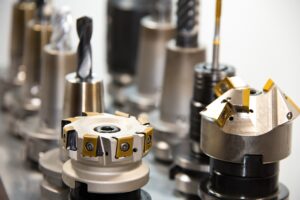AI and Machine Learning: Transforming the Future of Technology
Introduction: The Age of Intelligent Machines
We are in the days when a machine can not only calculate and automate, but learn and optimize itself. The overwhelming combo of Artificial Intelligence (AI) and Machine Learning (ML) is the force behind this impressive change and is redefining all spheres of human existence, including the way people work, live and think.
AI means the imitation of human intelligence in machines as they can now do things related to their intelligence such as reasoning, language comprehension, and visions. Machine learning is a branch of AI based on which systems could learn by themselves according to the data and patterns as well as predict them with little human assistance.
So what role is AI and machine learning playing in the world? Now, let us take a swim on the effects they have, their uses, the challenges they pose and the promising future they have.
Understanding AI and Machine Learning
In a nutshell, AI and machine learning are data-driven. Machine Learning algorithms apply statistical algorithms so that machines can get better at performing a task with experience. As an example, model machine learning trained on thousands of X-ray images can one day diagnose diseases better than human radiologists.
Machine learning comes in three types:
- Supervised Learning Supervised learning is where the algorithm learns with a labeled dataset (e.g. spam email detection).
- Unsupervised Learning- The algorithm reveals the latent structures in unlabeled data (e.g, segmenting customers).
- Reinforcement Learning -It is a learning system that is mediatorily informed by rewards or penalties (i.e. self-driving cars learning road rules).
Applications of AI and Machine Learning in Real Life
1. Healthcare
AI and ML are revolutionizing healthcare diagnostics, drug discovery, personalized medicine, and remote monitoring. For instance, DeepMind’s AlphaFold solved a 50-year-old problem by predicting protein structures, helping advance biomedical research.
AI-powered tools can detect cancer cells, monitor heart conditions, or even predict epidemics by analyzing global health data. ML algorithms help hospitals optimize operations and treatment plans for better patient outcomes.
2. Finance
In the financial sector, machine learning models assess creditworthiness, detect fraud, and automate trading. AI-based robo-advisors offer personalized investment strategies, while natural language processing helps in customer support chatbots for banks.
3. Retail and eCommerce
AI and ML enhance customer experience by personalizing product recommendations, predicting shopping behavior, managing inventory, and optimizing supply chains. Think of how Amazon recommends products or how Netflix suggests what to watch next.
4. Transportation
Self-driving cars by Tesla, Waymo, and others are possible due to reinforcement learning, real-time data processing, and computer vision. AI also powers logistics optimization, fleet management, and route planning.
5. Education
Smart tutoring systems, automated grading, and personalized learning platforms like Khan Academy and Duolingo use AI to adapt content based on student performance. AI also aids in accessibility — converting text to speech or translating languages instantly.
6. Cybersecurity
With the rise in digital threats, ML is used to detect unusual behavior, identify malware, and protect sensitive data in real-time. AI-powered cybersecurity platforms are proactive, learning from past attacks to prevent future breaches.
7. Agriculture
Farmers use AI for precision farming — predicting crop yields, identifying plant diseases via drone imagery, and automating irrigation. Machine learning models help in climate prediction and efficient resource use.
The Future of AI and Machine Learning
AI and ML are still evolving; they may deliver even bigger results:
- Machines are making art, writing code and creating music because of Generative AI (such as GPT and DALL·E).
- Operating systems and productivity suites are being incorporated with AI agents in order to increase efficiency at work.
- Not all problems are solvable using the classical computer, and the Quantum Machine Learning may resolve them.
Within a short period, AI may help to overcome such big problems of the whole world as climate change, pandemic, and poverty. The idea of Artificial General Intelligence (AGI) or the machine that can understand humans in a human way is getting closer to reality.
Challenges and Ethical Considerations
Despite their promise, AI and ML bring significant concerns:
1. Bias and Fairness
AI models can inherit biases from their training data. For example, an algorithm trained on biased hiring data might discriminate based on gender or race. Fairness in AI requires ongoing monitoring, transparency, and diverse data inputs.
2. Privacy
AI systems often need vast amounts of data, raising concerns about how personal information is collected, stored, and used. Technologies like facial recognition have sparked debates about surveillance and consent.
3. Job Displacement
Automation may replace repetitive or manual jobs, potentially leading to unemployment. However, new AI-related roles are also emerging, from AI ethics officers to ML engineers. The challenge lies in reskilling the workforce.
4. Security
As AI becomes more powerful, so do the risks. Deepfakes, AI-generated misinformation, and autonomous weapon systems pose real dangers. Ensuring that AI is used responsibly and for good is a growing concern.
How Businesses Can Leverage AI and ML
Getting Started with AI and Machine Learning
Any student who would like to access AI can begin his studies in the following online systems:
- Coursera (Andrew Ng ml course)
- Udacity, Khan Academy and edX
- The AI learning hub of Google
- Fast.ai practical deep learning
To jump into ML, you must have programming skills (particularly, Python), linear algebra, and statistics knowledge. Such tools as scikit-learn, Jupyter Notebooks, and Google Colab help to make practical learning available.
The Human Side of AI
As the machine becomes smarter, we need to keep in mind this fact: AI is an advantage and not human values substitute. The future of work is human-AI collaboration human-AI collaboration where machines are supplementary to humanity, not the substitutes of human beings.
It takes the views of a variety of people, inclusivity in datasets, explainable AI, and international collaboration to build ethical AI. Plans and regulations (such as the AI Act and the AI ethics guidelines developed by EU and IEEE, respectively) are being formulated to facilitate responsible use of AI.
Conclusion: Towards an AI-Driven World
AI and machine learning are not farfetched realities anymore and are restructuring our lives, as we know them, in the present. Since discovering the presence of cancer to creating music, since streamlining the supply chain to facilitating smart cities, the role of AI is immense and is increasing.
The answer is in responsible innovation: The innovations of AI to be as transparent, inclusive, and values-aligned as possible. With the very edge of approaching technological revolution bearing down on us now, there is one thing that is certain, and that is the future will not only be determined by AI, but how we use it
FAQs
Q1. What does AI vs machine learning mean?
A: AI is the more general term of machines that act intelligently similar to humans whereas machine learning is the subtype of that which deals with the aspect of machines learning based on data.
Q2. What are the applications of machine learning in real life situations?
A: Whether in email spam filters, or Netflix recommendations, ML is applied in search engines, voice assistants, and fraud detection systems widely.
Q3. Will AI take away human work?
A: AI will take over certain types of work and provide some new ones as well. Critical thinking, human creativity and empathy remain to be beyond replaceable.
Q4. Will I be able to study AI and ML when I do not have a computer science degree?
A: Yes! A lot of free paid content can be found on the Internet to obtain the basics of AI/ML even without knowing how to program.
Q5. What are the ethical issues of AI?
A: Privacy, algorithm bias, misuse of surveillance, and automation of jobs are the main issues of concern. There is a need to develop responsibly.





